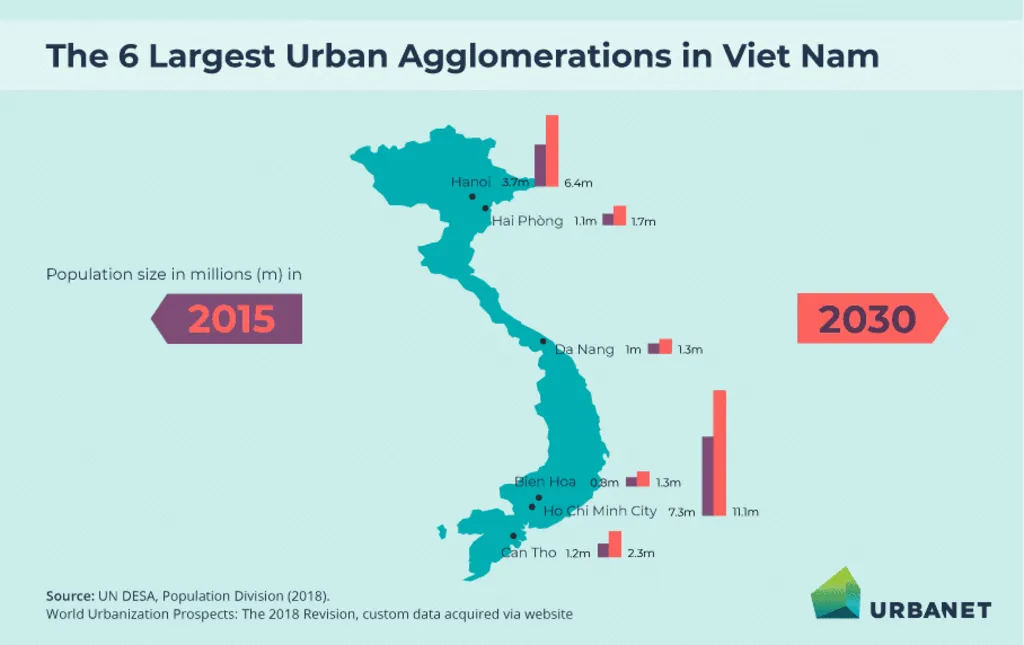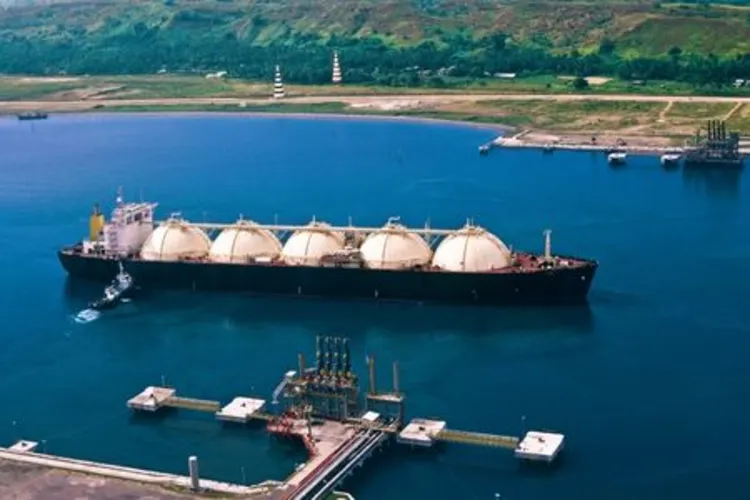Vietnam is experiencing rapid urban growth, reshaping its cities and construction landscape. The share of the population living in urban areas has risen from less than 20% in 1990 to 37.55% in 2022. By 2050, this figure is projected to surpass 57%, highlighting the ongoing transformation of Vietnam’s urban spaces. Understand how Vietnam Urban Expansion Trends are impacting the construction sector in the country!
Vietnam Urban Expansion Trends: Urban Growth Fuels Construction Demand
Urban areas are the backbone of Vietnam’s economy, contributing over 50% of GDP and generating approximately 80% of industrial and service jobs. This economic concentration drives an increased demand for residential, commercial, and infrastructure projects.

Major cities like Ho Chi Minh City and Hanoi are leading this growth. By 2030, Ho Chi Minh City is expected to grow by nearly 4 million residents, reaching a population of 11.1 million. Hanoi’s population is projected to rise by 2.7 million, hitting 6.4 million. These numbers emphasize the need for extensive urban development to accommodate the surge in urban populations.
Residential Housing: A Pressing Need
Housing demand in urban areas is skyrocketing. By 2049, Vietnam is expected to add 13.9 million urban households, intensifying the need for quality residential projects.
Currently, about 27% of the urban population lives in low-quality housing, highlighting a pressing issue for urban planners and developers. Addressing this gap requires innovative and affordable housing solutions, along with government support to ensure that all urban dwellers have access to safe and sustainable homes.
Infrastructure Challenges in Urban Areas
Infrastructure development is struggling to keep pace with urban growth. In secondary cities, 40% of households lack access to water supply systems, while only 10% of wastewater is treated through centralized systems. These statistics underscore the urgent need for investments in essential urban infrastructure.
The government aims to address these challenges through targeted initiatives, with a goal for urban areas to contribute 75% of GDP by 2025 and 85% by 2030. Achieving these ambitious targets requires extensive upgrades in transportation, water, and energy systems to create more livable cities.
Vietnam Urban Expansion Trends See Opportunities in Commercial Development
Vietnam’s urban expansion is also driving growth in commercial real estate. As cities expand, demand for office spaces, shopping malls, and mixed-use developments is rising. Businesses are capitalizing on the increased consumer spending and economic activity concentrated in urban centers.
This trend presents opportunities for developers and investors looking to tap into the growing commercial real estate market. High-density urban areas are becoming hubs for economic innovation, further cementing Vietnam’s position as a key player in the global market.
Balancing Growth and Sustainability with Vietnam Urban Expansion Trends
While urbanization drives economic growth, it also brings challenges. Overcrowding, pollution, and infrastructure gaps strain resources and impact quality of life. Sustainable urban planning is essential to balance development with environmental preservation.
Innovations like green building projects and eco-friendly infrastructure are gaining traction. By adopting these practices, Vietnam can ensure that its urban expansion is both inclusive and sustainable, setting an example for other rapidly urbanizing nations.
Vietnam urban expansion trends are transforming its construction and infrastructure sectors. The rapid growth of cities like Ho Chi Minh City and Hanoi highlights the need for innovative solutions to meet rising residential and commercial demands. While challenges like inadequate housing and infrastructure persist, the opportunities for growth and investment are immense. By prioritizing sustainability and smart urban planning, Vietnam can build a future that benefits its people and supports continued economic progress.







